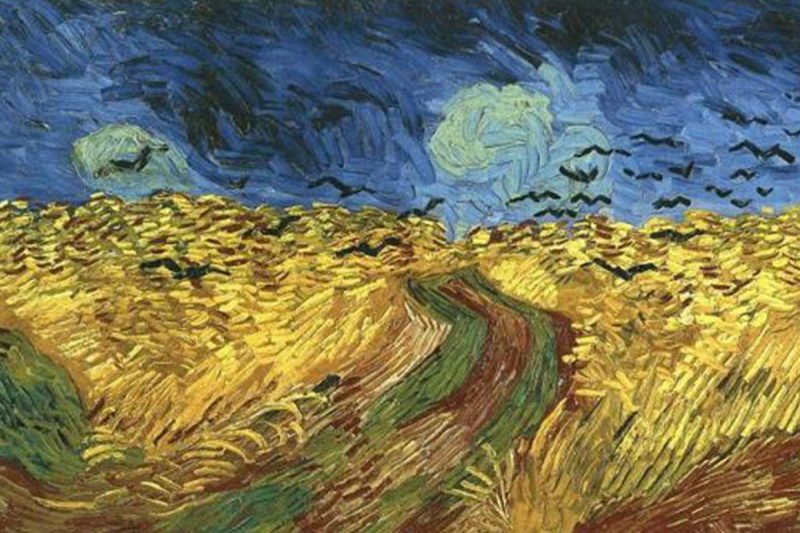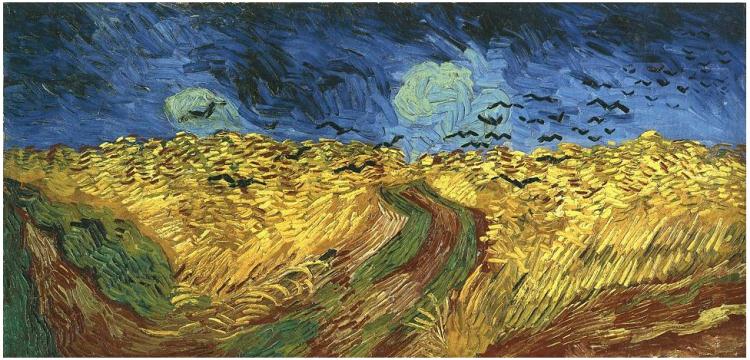
How Did Vincent van Gogh Die?
The simple answer is that Vincent van Gogh died from an infected gunshot wound on the morning of Tuesday, July 29, 1890.
A much longer answer involves the man’s infamously poor mental health and a lack of proper medical care. After a series of mental breakdowns, or “attacks” in Arles, Vincent van Gogh and his younger brother Theo decided that Vincent should move to the north of France to a small town known as Auvers-sur-Oise. It was a little outside of Paris, so Vincent would be close to Theo and his family but also far enough from the capital that Vincent would not be overwhelmed. Vincent moved to Auver on May 20, 1890.
In Auvers, Theo enlisted Dr. Paul Gachet to take over Vincent’s health. It was originally planned for van Gogh to live close to Dr. Gachet’s home, but van Gogh found accommodations that suited him better at the inn of the Ravoux family across from the town hall.
For some time, it appeared that time in the north was doing wonders for Vincent’s mood. He was closer to family and had new scenery to paint. He found the Oise Valley countryside inspiring. It reminded him of Holland, which gave him comfort. He painted feverishly. In fact, Vincent completed seventy paintings in the last seventy days of his life. An astonishing amount of work made even more impressive by the fact that he did not spend every day painting.

Vincent van Gogh’s last painting , Wheat Field with Crows.
Unfortunately, Vincent’s mental health began to deteriorate. He dreaded the return of his “mental attacks.” On occasion, he displayed erratic behavior, such as silently leaving mid-meal with Dr. Gachet to resume painting. Theo moved his family to Amsterdam to be closer to his wife’s parents, which greatly dismayed Vincent. Usually a faithful correspondent, Vincent’s letters to Theo stalled.
On Sunday, July 27, van Gogh went out early in the morning to the fields to paint, according to his usual habit. No one thought anything of it until he did not return for supper, which was unusual as Vincent went to bed early. At twilight, he appeared, walking strangely as the Ravoux family relaxed after dinner. Before he could go to his room, Madame Ravoux asked what was wrong, Vincent gave the succinct response, “I am wounded.”
Monsieur Ravoux followed Vincent to his rooms, where he questioned him further until Vincent admitted that he had shot himself in the chest. Two doctors were summoned; one was the local doctor and the other was Dr. Gachet, at Vincent’s request. Both doctors had little experience with gunshot wounds. While Vincent had been aiming for his heart, he missed it and all other vital organs. Both doctors determined that the bullet lodged itself near the spine. They decided not to operate and bandaged the wound, making Vincent as comfortable as they could.
Dr. Gachet contacted Theo through his employer as Vincent refused to give the address. Theo arrived on Monday afternoon. For the first hours Theo was there, Vincent appeared to be better than he had been led to believe. The day progressed, and it became clear that this was not so. The wound was infected. In the dawn hours of the morning on Tuesday, July 29, Vincent van Gogh died.
In the hours leading up to his death, Dr. Gachet and Theo both described Vincent as being stoic, accepting. He was a man ready for the peace that death would give him. In 2014, two biographers credited another reason for his death. They claimed that it is possible that Vincent did not commit suicide, that someone shot him instead. While some evidence supports their claim, more still supports his death being a suicide. Murder is a more palatable death than thinking that a man such as Vincent van Gogh would have such a bleak view of himself that he no longer wished to live. What should be remembered about him is not his death, but all the beauty and joy he created for the world before he left it.

It still is a strange story. It is very hard, if not at all impossible, to shoot yourself in the chest with a rifle. Also, in all the stories we know about Vincent’s life, never was there any mention of him carrying a gun or rifle. Why would he have carried a rifle that day, what is the explanation for that? It is all a big mystery.